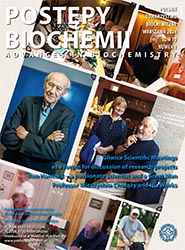Self-organisation of early stress response in the biology of cancer
DOI:
https://doi.org/10.18388/pb.2021_521Abstract
The early stress response by AP-1 (FOS/JUN), supported by upregulation of c-Myc and involved in cell-fate changes and adaptation to hostile environments, is increased in cancer. The review shows the biphasic character of this response with negative feed-back typically lasting a few hours as a feature of the genome regulation by self-organising criticality. It involves rapid splitting of the pericentromeric heterochromatin clusters, opening of the active chromatin, and a massive transcription acceleration wave. Phylostratigraphic analysis revealed that AP-1 genes evolved in the Cambrian explosion ~500 Mya integrating the protein interaction networks of reproduction including proto-placenta intertwined with cytokine and immunity pathways, sex determination, oocyte maturation, and embryonal stemness. The peak of this response as part of accelerated cell senescence led by AP-1 and IL-1β was found in breast cancer cell-line resistant to doxorubicin. Adaptability of aggressive cancer to treatments can be explained by emergent stress response evolutionarily protecting reproduction
Downloads
Downloads
Published
License
Copyright (c) 2024 Jekaterina Erenpreisa, Kristine Salmina, Ninel M Vainshelbaum, Inna Inashkina, Talivaldis Freivalds

This work is licensed under a Creative Commons Attribution 4.0 International License.
All journal contents are distributed under the Creative Commons Attribution-ShareAlike 4.0 International (CC BY-SA 4.0) license. Everybody may use the content following terms: Attribution — You must give appropriate credit, provide a link to the license, and indicate if changes were made, ShareAlike — If you remix, transform, or build upon the material, you must distribute your contributions under the same license as the original. There are no additional restrictions — You may not apply legal terms or technological measures that legally restrict others from doing anything the license permits.
Copyright for all published papers © stays with the authors.
Copyright for the journal: © Polish Biochemical Society.




